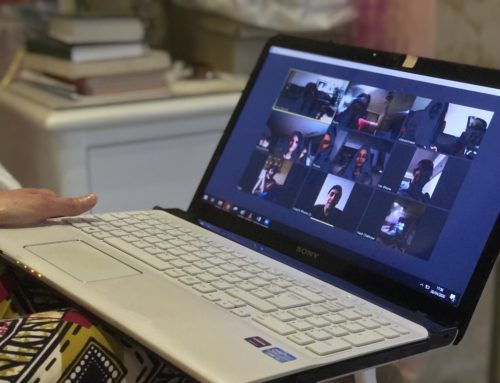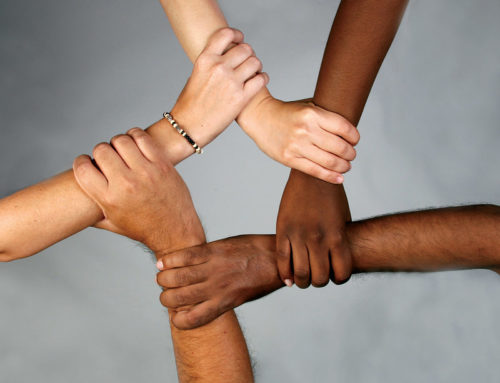
Antionette Kerr
We’ll be talking a lot about media in the next couple of weeks with guests Peter Panepento and Antionette Kerr (today’s guest blogger). Next Tuesday, August 29th, Peter will lead What Reporters Really Want: Building Media Relationships That Get Real Results. Then Antionette will present Navigating the Media Relations Trifecta of Earned, Paid, and Owned Media on Thursday, September 7th. Both webinars will be recorded if you can’t make it live. ~Kristina
Guest Post by Antionette Kerr
When Peter Panepento and I teamed up to work on a book that connects nonprofit communications pros, like you, with the world of modern media relations, we began interviewing journalists and nonprofits with one question in mind:
How can nonprofits get journalists to tell their stories?
These interviews gave us a lot of practical answers to those questions—some that Peter will be sharing in his upcoming webinar—but as we began laying out the final chapters for the book, we realized there was something missing. As a journalist who’s been looking at busted press releases for more than 20 years, I totally understand the importance of nonprofits having strong media relationships, interview techniques and effective PR strategies. That’s primarily why Peter and I co-wrote a book. But as a former nonprofit staff person and communications rep, I have been on the other side of the coin.
And here’s the reality…
Even if when you have a good media relations strategy, earned media doesn’t always equal quality stories.
Good Media Relations Doesn’t Come with an Earned Media Guarantee
You should have strong media relations, but that doesn’t guarantee coverage on everything you pitch. The media aren’t going to cover every new grant, fundraiser or “feel good” story you send their way. Yet the success of your work could be measured that way. We’ve seen some sophisticated media relations plans. Organizations have gone to great lengths to hire firms, staffers, and freelancers to help improve coverage. One nonprofit that we interviewed spent large amounts of its annual budget (almost $100,000) for a media relations strategy with very little earned media results.
All Press Isn’t Good Press
Don’t believe the hype that any press coverage is good for your agency. Between missed quotes, poorly written stories, stories that focus on the wrong things (e.g. fundraising expenses and newly hired employees’ salaries) and news segments where the reporter cuts out the most important part of what you said, earned media occasionally needs a “handler.” I’ve seen this in political campaigns when one person’s entire job was to read and correct poor media coverage. Most nonprofits will not invest in that level of “handling” need unless there is a crisis.
But think back to the Kony controversy? Kony was Africa’s most notorious militia leader. During a decade-long campaign of intimidation in northern Uganda, Kony’s Lord’s Resistance Army (LRA) kidnapped tens of thousands of children and youths for use as soldiers and sex slaves. The small San Diego nonprofit, Invisible Children, found itself at the heart of controversy after the short video “Kony 2012” shed light on Joseph Kony and received 120 million views in five days. At first, the group’s video was shared through nontraditional sources and advocates. The same video was later retweeted by celebrities like Rihanna and even Bill Gates. The technology website Mashable quickly named it the most viral video of all time and I can imagine that the Kony staff (like most of us would have) celebrated.
But Invisible Children was not prepared for the flood of media attention it received. Critics claimed the crimes of the LRA had been exaggerated and used for gain by the nonprofit. Other advocacy groups accused Invisible Children of oversimplifying a complex issue and questioned how the organization managed its money. Less than two weeks after “Kony 2012” became Invisible Children’s viral sensation, Jason Russell, the executive who narrated the video, had a mental breakdown. Hopefully we all learned a few lessons from Invisible Children’s struggle.
Clean-up Can Be Tricky
Even when there isn’t a controversy, clean-up is necessary. As a journalist I’ve been guilty of putting the wrong date or address on an event. I’ve even witnessed a case where one nonprofit housing agency won a grant and the local news station called it by another agency’s name. That mistake even had board members confused. The station provided a correction to the news segment the following day (unfortunately, the nonprofit’s friends, families and followers had tuned into the botched coverage). Sometimes you find yourself facing that thin balance of asking for a correction. Yet there is an old adage, “Never pick a fight with someone who buys ink by the barrel.”
Earned Coverage Isn’t Helping Your Brand (Unless You Lead It To)
Earned media coverage doesn’t always “get it” when it comes to telling a story that shows the core of your nonprofit’s mission and values. Journalists are often looking for a quick, clichéd, “feel good” story without regards to how the coverage makes your agency or the people you serve appear to the audience. Two examples: One homeless shelter was being asked for “success stories” of clients who have overcome drug addiction. After several years of providing this type of story, the agency intentionally sent a homeless veteran who had a different set of circumstances that led him to the shelter. Another example: a summer recreational and enrichment camp asked a local newspaper to stop publishing pictures of children jumping in the pool with its annual camp stories. The director wanted the public to know that the youth participating in the camp have other activities that include skills they can take home with them like gardening and yoga.
Is It Time to Stop Begging for Good Media Coverage?
Earned Media isn’t the only way to get coverage for nonprofits. There are a number of other unfortunate reasons that could be keeping your agency from quality traditional media coverage. It can be frustrating, but you don’t have to give up.
For those of you who have a great media strategy and coverage, investing the time into coordinating your TRIFECTA of earned, paid and owned media can save you time and maximize your budget in the long run.
So what do we mean by The Trifecta?
- Earned media. Journalism in its truest form refers to publicly gained news stories from an independent source other than paid advertising including television, newspapers, magazines, podcasts and radio.
- Paid media. Advertising to promote content in order to drive earned media as well as direct traffic to owned media properties. This can include traditional media, public service announcements or social media sites like Facebook, Twitter and LinkedIn that offer advertising.
- Owned media. Owned media is any property that you control and is unique to your brand. Some of the most common examples are websites, online newsrooms, newsletters, annual reports, blogs, social media and any publications that your organization publishes.
You need a media relations strategy, but earned media is just one part of it. Leveraging your other sources can make poor coverage and no coverage less of a problem!
I am hosting a Nonprofit Marketing Guide webinar that will cover some of the reasons above. But rather than focus on the coverage you could be receiving (I will leave that to my buddy Peter Panepento’s webinar next Tuesday), we will talk about coordinating the The Trifecta of earned, paid and owned media in a way that maximizes your time, money and takes control of your story in an empowered way.
I hope you’ll join us.
Many nonprofit communications pros focus on earned media without realizing that owned and paid media can support and/or amplify your coverage. Antionette Kerr has been a newspaper journalist, social media correspondent and nonprofit director who wants to see nonprofits to stop begging for media coverage and focus on coordinating better quality stories told through variety of forms of media.





